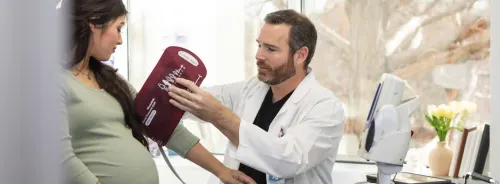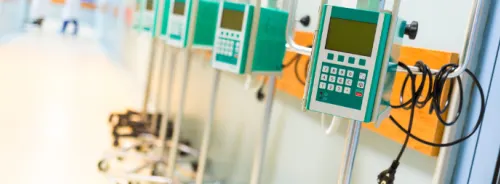Q: I had my first mammogram this year and was told that everything was fine, but the radiologist sent me a letter saying that I have dense breast tissue. What does this mean, and should I be worried?
A: The short answer is no. Dense breast tissue by itself does not need to cause alarm. Actually, approximately 40% to 50% of women undergoing mammography have dense tissue.
That being said, there are a couple of things to consider if you have dense breast tissue:
- Dense tissue can mask things on the mammogram, making it harder to detect small cancers.
- Women with dense tissue are at higher risk of breast cancer than are women who do not have dense tissue.
Because of these factors, women with dense tissue may benefit from additional breast imaging besides the routine screening mammogram. The decision to undergo additional imaging may depend on your age, exactly how dense your tissue is, personal preferences, and whether you have additional risk factors for breast cancer, such as a family history of breast or ovarian cancer, previous breast biopsies, or exposure to hormones.
Breast density is grouped into four categories based on mammographic appearance. Categories A and B are considered “decreased breast density,” while categories C and D are considered “increased breast density.” About 40% of women fall into category C, with only about 10% of women falling into category D.
Q: If I’ve been told I have dense tissue, should I have additional imaging besides a mammogram?
A: Regardless of your breast density, no other imaging strategy replaces the screening mammogram as the primary method for breast cancer screening. However, there are a few options for breast imaging that may be used in conjunction with the mammogram for women with dense breast tissue.
- 3D mammogram (tomosynthesis). This is performed at the same time as the traditional 2D mammogram. Tomosynthesis may detect only about 1 to 2 additional breast cancers per 1,000 women screened, but it also reduces the likelihood of false-positive findings. This translates to a lower recall rate, which means fewer women need to come back for additional views or unnecessary biopsies.
- Whole-breast ultrasound. This has been used historically for women with dense tissue, although the added cancer detection rate is still low. Whole-breast ultrasound detects about 2 to 4 additional cancers per 1,000 women screened compared with mammography alone. The major downside is that whole-breast ultrasound has a fairly high false-positive rate.
- Contrast-enhanced digital mammography (CEDM). This can be done at the same time as the traditional screening mammogram. CEDM uses an iodine-based contrast that is delivered through an IV prior to the test. This is a newer imaging strategy, so the research is not as robust. But initial studies have been very promising. Some literature estimates incremental cancer detection rates as high as 13 to 15 additional breast cancers per 1,000 women screened.
- Molecular breast imaging (MBI). This is done separately from the mammogram and looks at blood flow patterns within the breast tissue. It requires IV administration of a radioactive tracer compound. MBI does have a small dose of radiation associated with it — more radiation than a mammogram, but not nearly as much as a CT scan. Current literature estimates incremental cancer detection rates at 8 to 9 breast cancers per 1,000 women screened compared with mammogram alone. MBI is a great option for women with dense tissue who do not have a lot of other risk factors for breast cancer.
- Magnetic resonance imaging (MRI). MRI has the highest cancer detection rates, at approximately 14 to 17 additional breast cancers per 1,000 women screened. However, MRI is also the most costly and cumbersome of any test to image the breast tissue. Because of this, current guidelines recommend the use of MRI only for women at the highest risk of breast cancer. Specifically, these are women whose lifetime risk exceeds 20% to 25% based on factors such as family history, reproductive history and breast density. MRI does not have any associated radiation, although it does require an IV compound called gadolinium.
Many women are concerned about the increased dose of ionizing radiation with tomosynthesis, CEDM and MBI. Overall, the dose of radiation is quite low with breast imaging. The additional radiation with tomosynthesis compared with traditional 2D mammography is so low as to be nearly negligible. CEDM and MBI both add to the overall radiation dose, with CEDM comparable to having an additional mammogram that year and MBI a little higher than mammogram, but not nearly as much as a CT scan.
The decision to pursue any of these options should be made on an individual basis, using shared decision-making with a health care provider. For women who have a family history of breast cancer or other strong risk factors, validated breast cancer risk assessment tools should be used to calculate breast cancer risk and guide decisions on breast imaging. In the absence of a family history of breast cancer, the use of additional imaging is considered optional but may still be appropriate for many women, especially those with extremely dense tissue.
Source & Image Credit : Mayo Clinic






